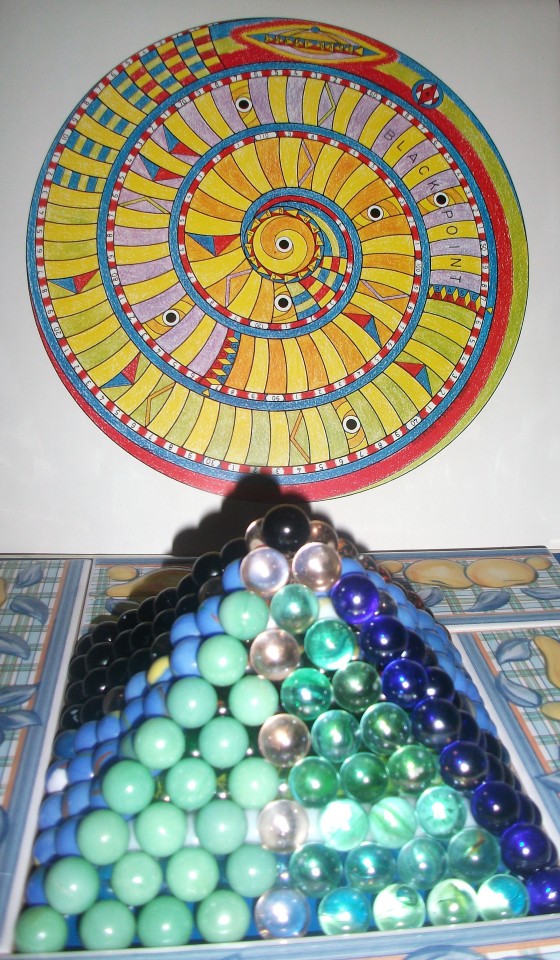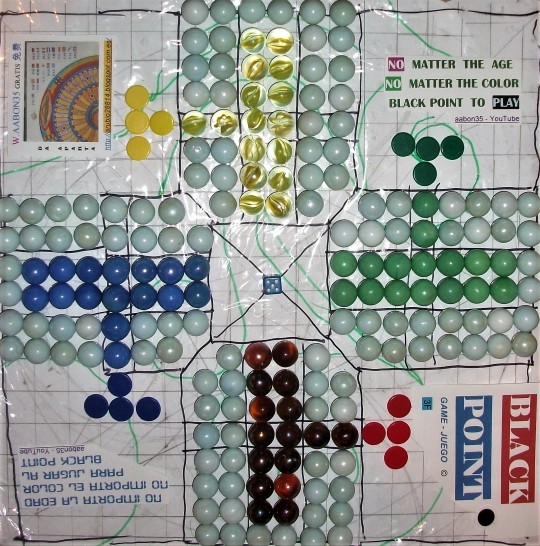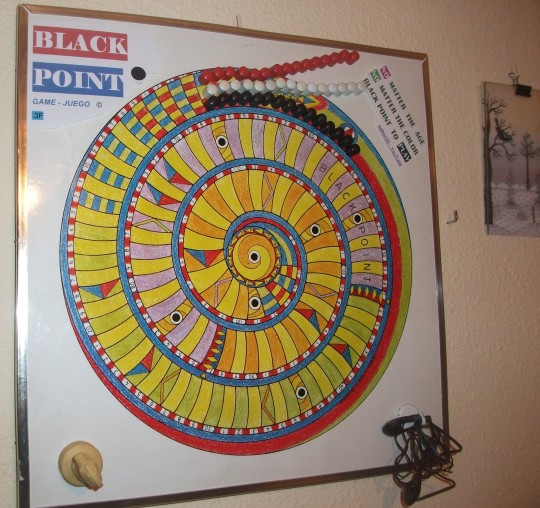#Parkase
Explore tagged Tumblr posts
Text

#masterpiece#obramaestra#black_point_game#Juego#game#http://aabon35.blogspot.com ⚫️ http://arubio28814.blogspot.com#boardgame#parchis#ludo#play#gpt#Parkase#x#world#one#ai#bard#new#ia#bgg#nft#aabon35#free#chess#Bollywood#Fortnite#Scrabble#tangram#Monopoly#Rafa
36 notes
·
View notes
Photo

Shri Gadadhara Pandita disappearance day Shri Gadadhar was the consant companion of Mahaprabhu from the time of their childhood. His father's name was Shri Madhva Misra and his mother's name Shri Ratnavati-devi. They lived very near the house of Shri Jagannatha Misra in Mayapura. Ratnavati-devi thought of Saci-devi as her own sister, and always used to visit her. During their childhood, Shri Gaura Hari and Gadadhara would play together, sometimes at Mahaprabhu's house and sometimes at Gadadhara's house. They both studied together at the same school. Gadadhara was a few years younger then Nimai. Nimai couldn't remain without Gadadhara even for a moment and Gadadhara likewise couldn't stand to be separated from Nimai. In the Gaur-ganoddesa-dipika, it is described that that person who in Vraja was the daughter of Shri Vrsabhanu Raja, namely Shrimati Radharani, is now celebrated as Shri Gadadhara Pandita. Shrila Svarupa Damodara has written in his diary: avani sura bavah Shri Panditakhyo jatindrah / sa khalo bhavati Radha Shrila Gauravataro. Shri Vasudeva Ghosa Thakura has also written: Agam agocar gora akhil brahma-par, veda upar, najane pasandi mati bhora Nitya-nityananda ChaitanyaGovinda Pandit Gadadhar Radhe Chaitanya yugala-rupa kebol raser kup avatar sadsiva sadhe Antare nave-ghana bahire gaura tanu yugalrupa parkase Kahe Vasudeva Ghose yugal bhajan base janame janame rahu asa "Lord Gaurasundara, who is beyond the perview of the scriptures, beyond the entire Brahman, and above even the Vedas, can never be known by the atheists whose intelligence is dull. Lord Nityananda is His eternal self. Lord Chaitanya is Lord Govinda Himself and Pandita Gadadhara is none other than Shri Radha. The divine couple, who are present in Shri Chaitanya, are a well of rasa. Advaita Acharya (Sadasiva) has prayed for His descent. Within He is blackish but of a golden hue without, the manifestation of the divine couple. Thus Vasudeva Ghosa sings of the beauty of this divine couple - Shri Gaura-Gadadhara - in whose worship he has been completely subjugated. He prays that he will desire to serve them birth after birth." https://www.instagram.com/p/CfbVkQJrQr4/?igshid=NGJjMDIxMWI=
1 note
·
View note
Photo

Ludo Classic : Free Board Game
Ludo Classic : Free Board Game
Game Ludo Classic : Free Board Game là dòng game Board
Giới thiệu Ludo Classic : Free Board Game
New style of 🎲🎲 Ludo Classic 🎲🎲 for free and offline. Play like a Rock Star 🌟🌟 and beat the opponent. In this new year 2020 there is 🎲🎲 Ludo Classic 🎲🎲 is now available. Introducing Free Board Game with new concept of Ludo Classic. This Free Board Game is one of favorites games of the Childhood. This ludo classic game provides the features of multiplayer for kids as well as adults. Join this new style of Ludo,play with friends and show them your stardom by winning battle and be the 🌟👑 star king 🌟👑 of this ultimate game. Ludo Classic game is available in 5 different modes for Free: - Player 1 vs Computer 🎲 - Player 1 vs Computer 1 vs Computer 2 vs Computer 3 🎲🎲🎲🎲 - Player 1 vs Player 2 🎲 - Player 1 vs Player 2 vs Player 3 🎲🎲🎲 - Player 1 vs Player 2 vs Player 3 vs Player 4 🎲🎲🎲🎲 Features of Ludo Classic * Without internet you can play this game with your Friends or Computer. * You can play with your friends and family. * You can play multiplayer mode offline. * Classic graphics like dice and board game will give proper feel of Classic Ludo. * There is 2 modes available that is Local and with Ai. * Turn on/off 🔊 sound and sfx 🔊. * King in Free Board Game Challenge Your Friends or 💻 computer,beat them and feel like a 👑 King. Beat your opponent in very Classic style. Play like a 👑 King and win like a 👑 King! Concept of Ludo Classic This game is very different than other Free Board Games or Dice roll game. "Ludo Classic" will take you to the original ludo game and give you extra fun and you can play in your time. This Ludo Classic is best dice board game. So let's Begin the battle of this Ludo Classic game and start the rolling the 🎲Dice🎲. Challenge your friends and beat them Now!!! In this new year 2020 there is Ludo Classic is available. Introducing new style and new concept of Ludo Classic. This Free Board Game is one of favorites games of the Childhood. This ludo classic game provides the features of multiplayer for kids as well as adults. Join this new style of Ludo,play with friends and show them your stardom by winning battle. Ludo star game is also going by different names & variations in different regions like लूडो,Uckers, Griniaris, Fia, Cờ cá ngựa, Petits Chevaux (Little Horses),Ki nevet a végén, برسي (Barjis/Barjees),Fei Xing Qi' (China),Parqués (Colombia),Barjis / Bargis (Palestine),Griniaris (Greece),Mens-erger-je-niet (the Netherlands),Parchís or Parkase (Spain),Le Jeu de Dada,Barjis(s) / Bargese (Syria),Pachîs (Persia/Iran),da' ngu'a ('Vietnam'),ludo chakka ( indian village),Parqués (Colombia),đá ngựa (Vietnam),Fei Xing Qi' (China),Parcheesi (North America),Parchís (Spain),Mensch ärgere Dich nicht (Germany),Non t'arrabbiare (Italy),Chińczyk (Poland),Reis ümber maailma (Estonia),Fia-spel or Fia med knuff (Sweden),Ki nevet a végén (Hungary),Parxís (Catalonia). Download Now our app and share Ludo Classic 🌟🎲👑. Some improvements.
Download APK
Tải APK ([app_filesize]) #gamehayapk #gameandroid #gameapk #gameupdate
0 notes
Text
#phase#three#out#boardgamer#boardgamegeek#games#http://aabon35.blogspot.com ⚫️ http://arubio28814.blogspot.com#boardgame#newgames#parchis#ludo#I_play#tabletopgames#Parkase#x#one#blogger#ai#Geminis#tiktokvideo#new#ia#tiktoklive#bgg#aabon35#tiktok#juegodemesa 🎲
17 notes
·
View notes
Text


#blackpointgame #free #ludo #parkase #bgg #chaupar #news #ai #parcheesi #tiktokersleaks #gpt #Elon #Rafa #play #parchis #pachisi # parqués #NFT http://aabon35.blogspot.com #bard #parchisi # ia #tiktoklive #boardgame #TikTokライブ配信# aabon35 http://arubio28814.blogspot.com #new #tiktok
#blackpointgame ⚫️#free 🎲#ludo#parkase#bgg#chaupar#news#ai#parcheesi#tiktokersleaks#gpt#Elon#Rafa#play#parchis#pachisi#parqués#NFT#boardgamegeek http://aabon35.blogspot.com#bard#parchisi#ia#tiktoklive#boardgame#TikTokライブ配信#aabon35 http://arubio28814.blogspot.com#new#tiktok
16 notes
·
View notes
Text

http://arubio28814.blogspot.com
#parchis🎲#blackpointjuego ⚫️#free#ludo#go#parkase http://arubio28814.blogspot.com#bgg#chaupar#marbleball#news#hi#parcheesi#tiktokersleaks#gpt#Elon#Rafa#play#pachisi#parqués#NFT http://aabon35.blogspot.com#bard#parchisi#ia#tiktoklive#boardgame#TikTokライブ配信#aabon35#new#tiktok
21 notes
·
View notes
Text



#blackpointjuego ⚫️🎲#free#ludo#parchis#go#parkase http://arubio28814.blogspot.com#bgg#chaupar#new#ai#play#parcheesi#tiktokersleaks#gpt#Elon#Nadal#pachisi#parqués#NFT http://aabon35.blogspot.com#bard#parchisi#ia#tiktoklive#boardgame#TikTokライブ配信#aabon35#tiktok
13 notes
·
View notes
Photo

Shri Gadadhara Pandita disappearance day Shri Gadadhar was the consant companion of Mahaprabhu from the time of their childhood. His father's name was Shri Madhva Misra and his mother's name Shri Ratnavati-devi. They lived very near the house of Shri Jagannatha Misra in Mayapura. Ratnavati-devi thought of Saci-devi as her own sister, and always used to visit her. During their childhood, Shri Gaura Hari and Gadadhara would play together, sometimes at Mahaprabhu's house and sometimes at Gadadhara's house. They both studied together at the same school. Gadadhara was a few years younger then Nimai. Nimai couldn't remain without Gadadhara even for a moment and Gadadhara likewise couldn't stand to be separated from Nimai. In the Gaur-ganoddesa-dipika, it is described that that person who in Vraja was the daughter of Shri Vrsabhanu Raja, namely Shrimati Radharani, is now celebrated as Shri Gadadhara Pandita. Shrila Svarupa Damodara has written in his diary: avani sura bavah Shri Panditakhyo jatindrah / sa khalo bhavati Radha Shrila Gauravataro. Shri Vasudeva Ghosa Thakura has also written: Agam agocar gora akhil brahma-par, veda upar, najane pasandi mati bhora Nitya-nityananda ChaitanyaGovinda Pandit Gadadhar Radhe Chaitanya yugala-rupa kebol raser kup avatar sadsiva sadhe Antare nave-ghana bahire gaura tanu yugalrupa parkase Kahe Vasudeva Ghose yugal bhajan base janame janame rahu asa "Lord Gaurasundara, who is beyond the perview of the scriptures, beyond the entire Brahman, and above even the Vedas, can never be known by the atheists whose intelligence is dull. Lord Nityananda is His eternal self. Lord Chaitanya is Lord Govinda Himself and Pandita Gadadhara is none other than Shri Radha. The divine couple, who are present in Shri Chaitanya, are a well of rasa. Advaita Acharya (Sadasiva) has prayed for His descent. Within He is blackish but of a golden hue without, the manifestation of the divine couple. Thus Vasudeva Ghosa sings of the beauty of this divine couple - Shri Gaura-Gadadhara - in whose worship he has been completely subjugated. He prays that he will desire to serve them birth after birth." https://www.instagram.com/p/CRJ100ALWfj/?utm_medium=tumblr
1 note
·
View note
Photo

Shri Gadadhara Pandita appearance day Shri Gadadhar was the consant companion of Mahaprabhu from the time of their childhood. His father's name was Shri Madhva Misra and his mother's name Shri Ratnavati-devi. They lived very near the house of Shri Jagannatha Misra in Mayapura. Ratnavati-devi thought of Saci-devi as her own sister, and always used to visit her. During their childhood, Shri Gaura Hari and Gadadhara would play together, sometimes at Mahaprabhu's house and sometimes at Gadadhara's house. They both studied together at the same school. Gadadhara was a few years younger then Nimai. Nimai couldn't remain without Gadadhara even for a moment and Gadadhara likewise couldn't stand to be separated from Nimai. In the Gaur-ganoddesa-dipika, it is described that that person who in Vraja was the daughter of Shri Vrsabhanu Raja, namely Shrimati Radharani, is now celebrated as Shri Gadadhara Pandita. Shrila Svarupa Damodara has written in his diary: avani sura bavah Shri Panditakhyo jatindrah / sa khalo bhavati Radha Shrila Gauravataro. Shri Vasudeva Ghosa Thakura has also written: Agam agocar gora akhil brahma-par, veda upar, najane pasandi mati bhora Nitya-nityananda ChaitanyaGovinda Pandit Gadadhar Radhe Chaitanya yugala-rupa kebol raser kup avatar sadsiva sadhe Antare nave-ghana bahire gaura tanu yugalrupa parkase Kahe Vasudeva Ghose yugal bhajan base janame janame rahu asa "Lord Gaurasundara, who is beyond the perview of the scriptures, beyond the entire Brahman, and above even the Vedas, can never be known by the atheists whose intelligence is dull. Lord Nityananda is His eternal self. Lord Chaitanya is Lord Govinda Himself and Pandita Gadadhara is none other than Shri Radha. The divine couple, who are present in Shri Chaitanya, are a well of rasa. Advaita Acharya (Sadasiva) has prayed for His descent. Within He is blackish but of a golden hue without, the manifestation of the divine couple. Thus Vasudeva Ghosa sings of the beauty of this divine couple - Shri Gaura-Gadadhara - in whose worship he has been completely subjugated. He prays that he will desire to serve them birth after birth." https://www.instagram.com/p/COuLD78heyZ/?igshid=k0yht9qbi60k
1 note
·
View note